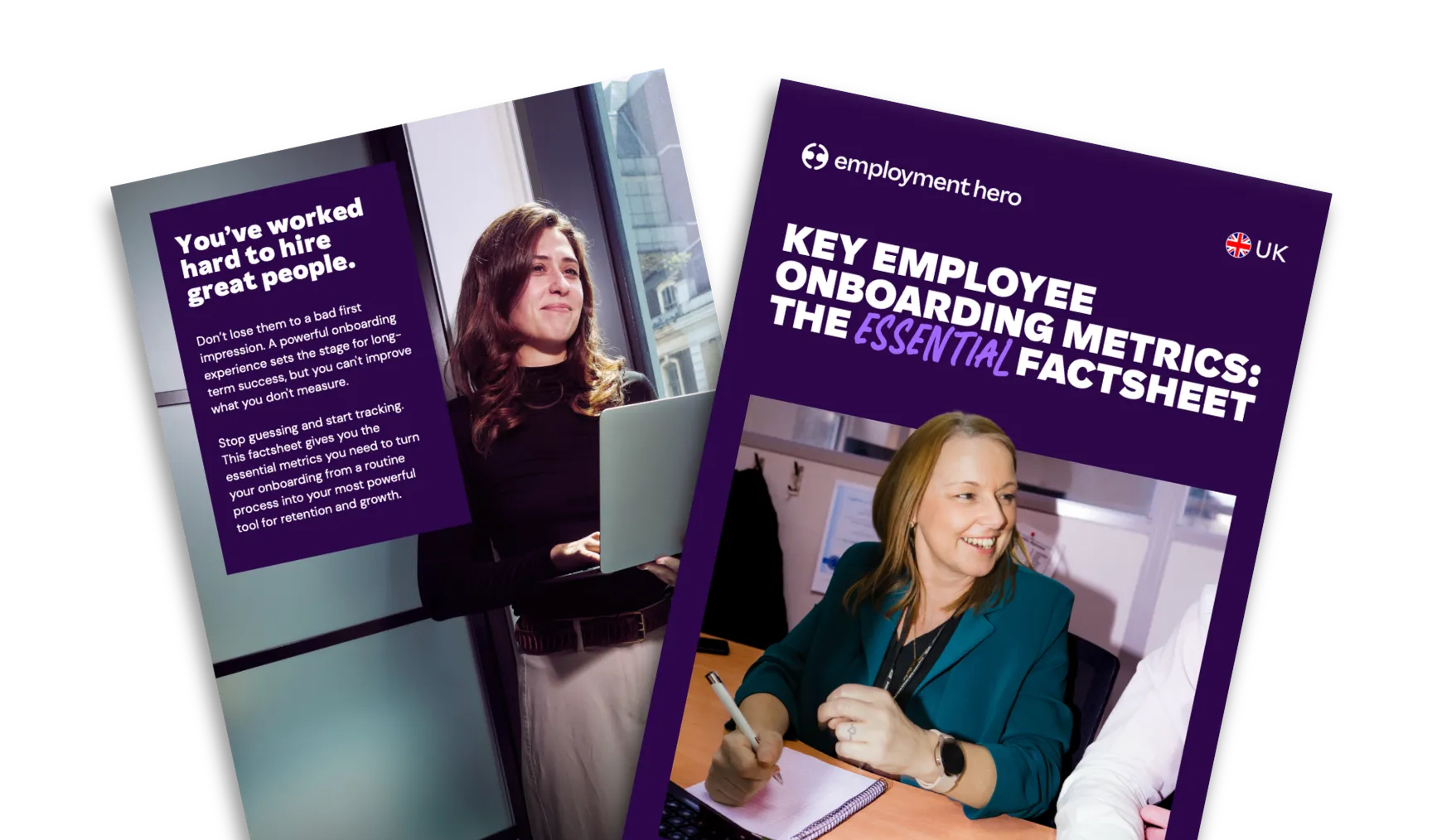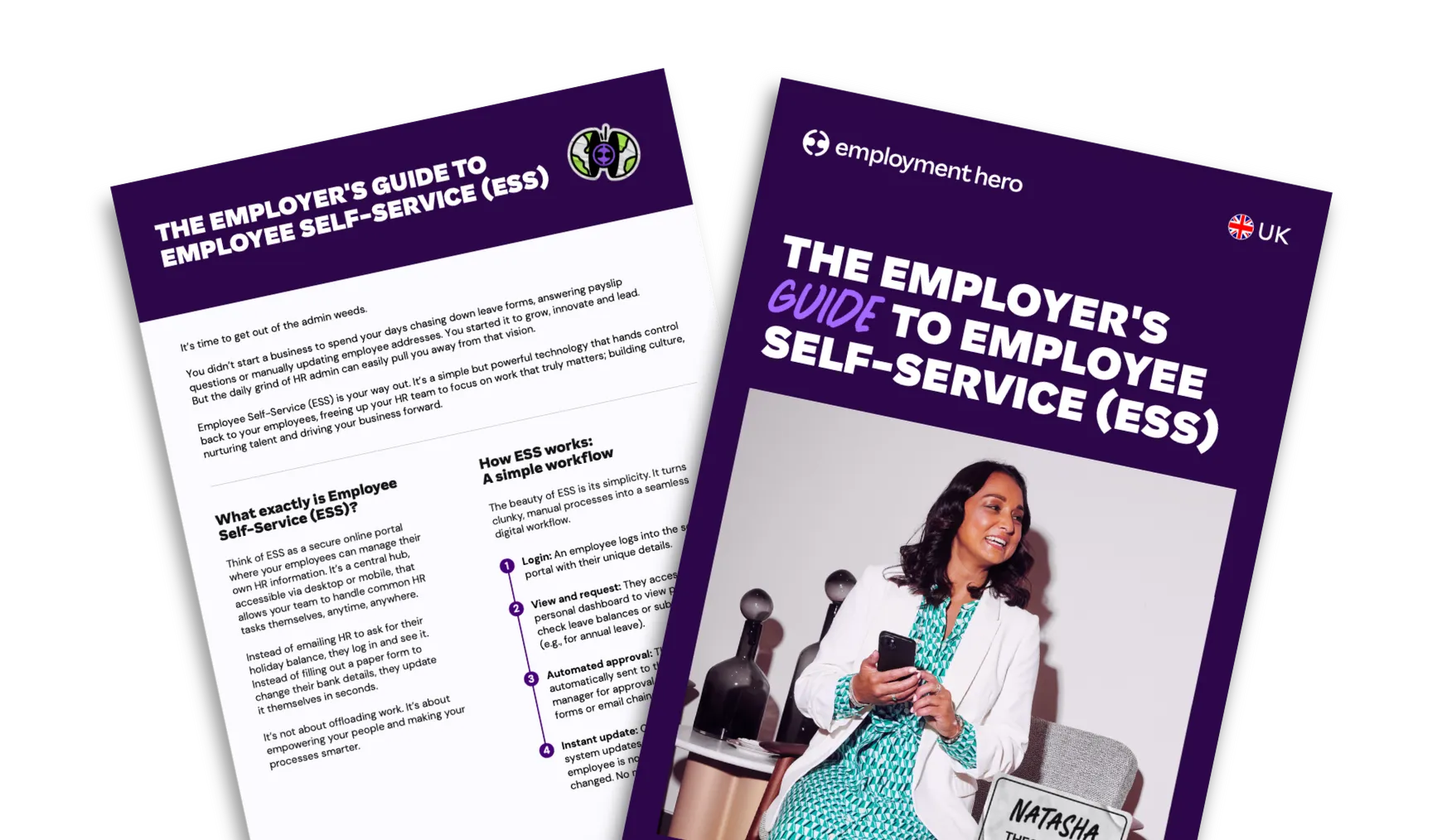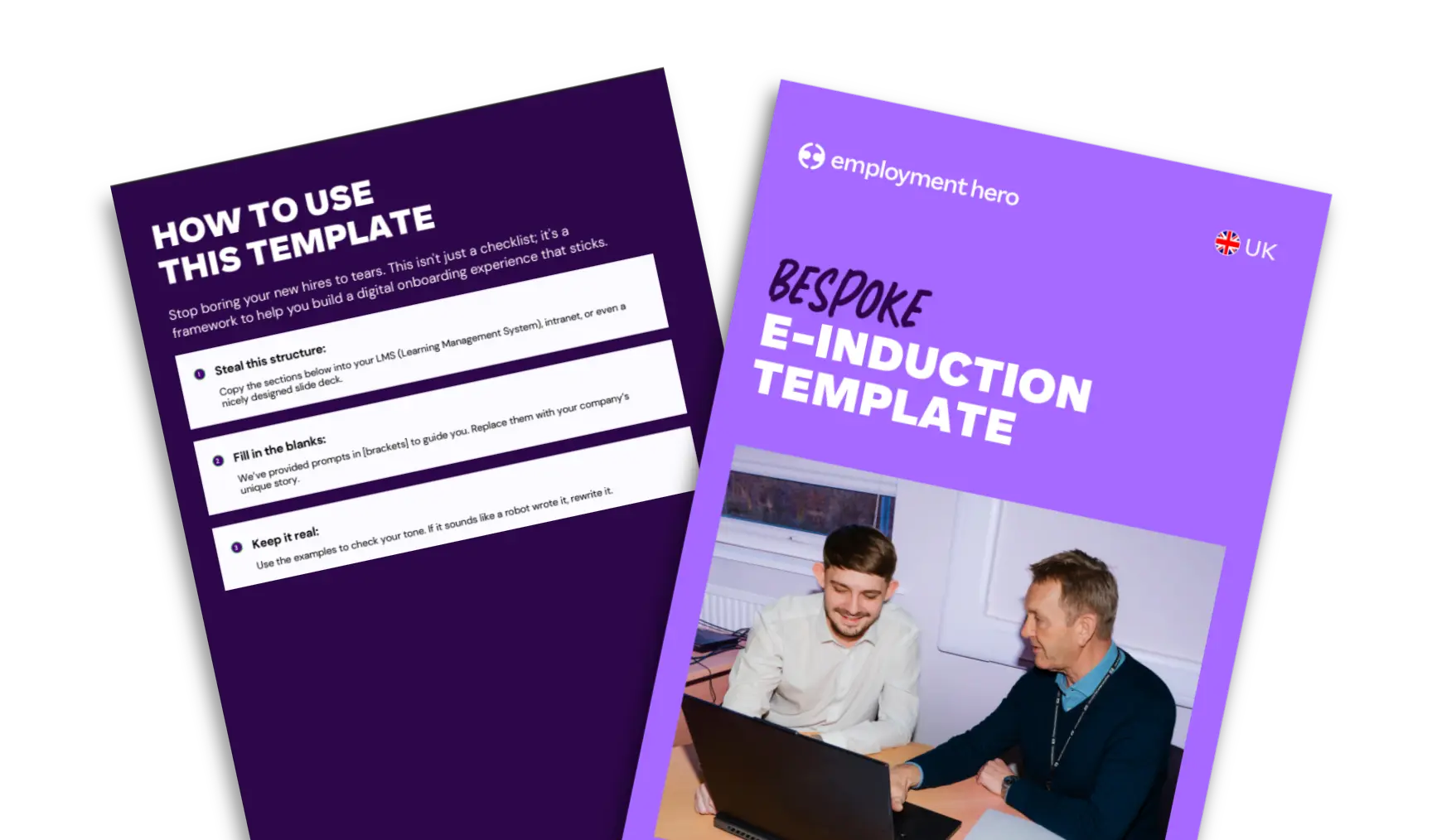Employee performance review checklist
Published
Employee performance review checklist
Published
Employee performance reviews can be one of the most powerful tools for growth… when they’re done right. Unfortunately they are often seen as just a box ticking exercise or another meeting that could have been an email. But the reality is, they can spark meaningful conversations, strengthen trust and align professional development with business goals.
When managers and their team come together to reflect, celebrate wins and plan for what’s next, incredible things happen: confidence grows, output improves and teams thrive.
But we get it, knowing how to change employee performance reviews from something you have to do into something empowering isn’t always easy. That’s why we’ve put together this checklist.
The importance of employee performance reviews
Meaningful employee performance reviews are a cornerstone of a high-performing culture. When done well, they are one of the most effective tools you have to boost productivity, improve retention and increase employee engagement. In the UK, organisations like ACAS stress the importance of fair and regular appraisals as a key part of good management practice.
Regular, constructive feedback shows your people that you are invested in their development. It gives them the clarity and direction they need to excel in their roles. This isn’t just about managing output; it’s about nurturing talent and building a workforce that is aligned, motivated and ready to tackle business challenges. The foundation of this is learning how to measure employee performance effectively.
The process begins with how you frame the conversation.
Best practices: How to write a performance review
Writing an appraisal that inspires action requires a thoughtful approach. It’s about balance, specificity and a forward-looking perspective.
Here are some of our top tips for writing employee performance reviews:
- Focus on creating a structured, evidence-based narrative that is fair and motivational.
- Keep the tone supportive and positive.
- Avoid vague statements and focus on observable behaviours and their impact.
- When setting future objectives, use the SMART (Specific, Measurable, Achievable, Relevant, Time-bound) goal framework to create clarity and a shared understanding of success.
- Be conscious of unconscious bias and ensure your assessment is based purely on output and contribution.
Pitfalls to avoid in performance reviews
Knowing what not to do is just as important as knowing what you should be doing. And the road to a bad appraisal is paved with common mistakes.
Vague, unhelpful language like “be more proactive” leaves employees confused. A lack of concrete evidence makes feedback feel like a personal opinion rather than a fair assessment. Perhaps the most common trap is focusing only on the negatives, which puts employees on the defensive and shuts down any chance of a productive conversation.
Here’s a breakdown of what not to say, as well as what you should say instead to get the most positive outcome from your employee performance review.
| What not to say in an appraisal | What to say in an appraisal |
| “You need to have a better attitude.” (Vague and subjective). | “In team meetings, I’ve noticed you wait to be asked for input. I’d like to see you share your ideas more proactively, as your perspective is valuable.” (Specific and encouraging). |
| “Everyone thinks you are difficult to work with.” (Uses hearsay). | “Let’s talk about the missed deadline on the X project. What challenges did you face and how can we plan differently for the next one?” (Focuses on the problem, not the person). |
| “You’re not a natural leader.” (Fixed mindset, not developmental). | “You excel at organising projects, but I’ve seen opportunities for you to delegate more to your team. Let’s identify some tasks you could hand over to help develop their skills.” (Balanced and developmental). |
| “Just get it done.” (Dismissive and unhelpful). | “This task is a priority. What support or resources do you need to complete it on time?” (Supportive and collaborative). |
Example phrases and comments by skill area
Here are positive, constructive and self-appraisal examples organised by key competencies.
Use these as a starting point to craft feedback that is specific to your team members. This is a core part of our complete employee performance review guide.
Communication skills
Positive feedback examples:
- “You articulate complex ideas clearly and concisely, which helps the whole team stay aligned.”
- “Your active listening skills make your colleagues feel heard and valued.”
Constructive feedback examples:
- “Let’s work on ensuring your written updates are as clear and detailed as your verbal ones to avoid any miscommunication.”
- “I’d encourage you to be more assertive in sharing your viewpoint in larger meetings, as your insights are often missed.”
Self-review examples:
- “I have made a conscious effort to provide regular project updates to all stakeholders.”
- “I am working on being more direct and concise in my email communications.”
Teamwork and collaboration
Positive feedback examples:
- “You are a fantastic team player who is always willing to support colleagues to meet shared goals.”
- “You actively seek out different perspectives to improve the quality of the team’s work.”
Constructive feedback examples:
- “While you produce excellent work independently, let’s explore ways you can collaborate more closely with the team on larger projects.”
- “Be mindful of taking on too much yourself. Delegating tasks can empower your colleagues and improve team efficiency.”
Self-review examples:
- “I have taken the lead in organising team-building activities to improve morale and collaboration.”
- “I need to be more proactive in offering help to team members who seem overloaded.”
Problem-solving and decision making
Positive feedback examples:
- “You have a great ability to analyse complex problems and identify practical, effective solutions.”
- “You remain calm under pressure and make logical decisions in challenging situations.”
Constructive feedback examples:
- “When faced with a problem, try to consider a wider range of solutions before settling on a course of action.”
- “Let’s work on your confidence in making independent decisions on day-to-day issues.”
Self-review examples:
- “I successfully resolved the customer complaint about X by implementing a new process.”
- “I aim to rely less on my manager for answers and develop my own problem-solving skills.”
Adaptability and flexibility
Positive feedback examples:
- “You have a positive attitude towards change and adapt quickly to new processes and priorities.”
- “Your ability to pivot when the project brief changed was instrumental to our success.”
Constructive feedback examples:
- “I know you value routine, but let’s work on being more open to unexpected changes in project direction.”
- “When priorities shift, I need you to communicate any challenges you face in adapting, so we can support you.”
Self-review examples:
- “I embraced the new software system and have been helping others to learn it.”
- “I found it challenging to switch between tasks at short notice and I am developing strategies to manage this better.”
Sometimes, performance issues require a more structured approach, which is where a performance improvement plan template can be a vital tool.
Download the employee performance review checklist
Stop treating employee performance reviews as a chore. It’s time to transform them into the powerful strategic tool they are meant to be. With the right process and mindset, you can foster a culture of continuous improvement, drive engagement and build a team that is ready to win.
To download the guide, we just need a few quick details.
Related Resources
-
 Read more: Key Employee Onboarding Metrics and KPIs to Track
Read more: Key Employee Onboarding Metrics and KPIs to TrackKey Employee Onboarding Metrics and KPIs to Track
Discover the top onboarding metrics and KPIs every UK employer should track, and how to measure the success of your…
-
 Read more: What is Employee Self-Service (ESS)? How It Works & Employer Benefits
Read more: What is Employee Self-Service (ESS)? How It Works & Employer BenefitsWhat is Employee Self-Service (ESS)? How It Works & Employer Benefits
Learn how Employee Self-Service (ESS) simplifies HR admin, empowers staff to manage their data and frees your HR team to…
-
 Read more: How to Create Bespoke E-Inductions For New Hires And Contractors
Read more: How to Create Bespoke E-Inductions For New Hires And ContractorsHow to Create Bespoke E-Inductions For New Hires And Contractors
Learn how to design bespoke e-inductions for new hires and contractors. Discover flexible, learner-centred solutions to improve onboarding and retention.



















